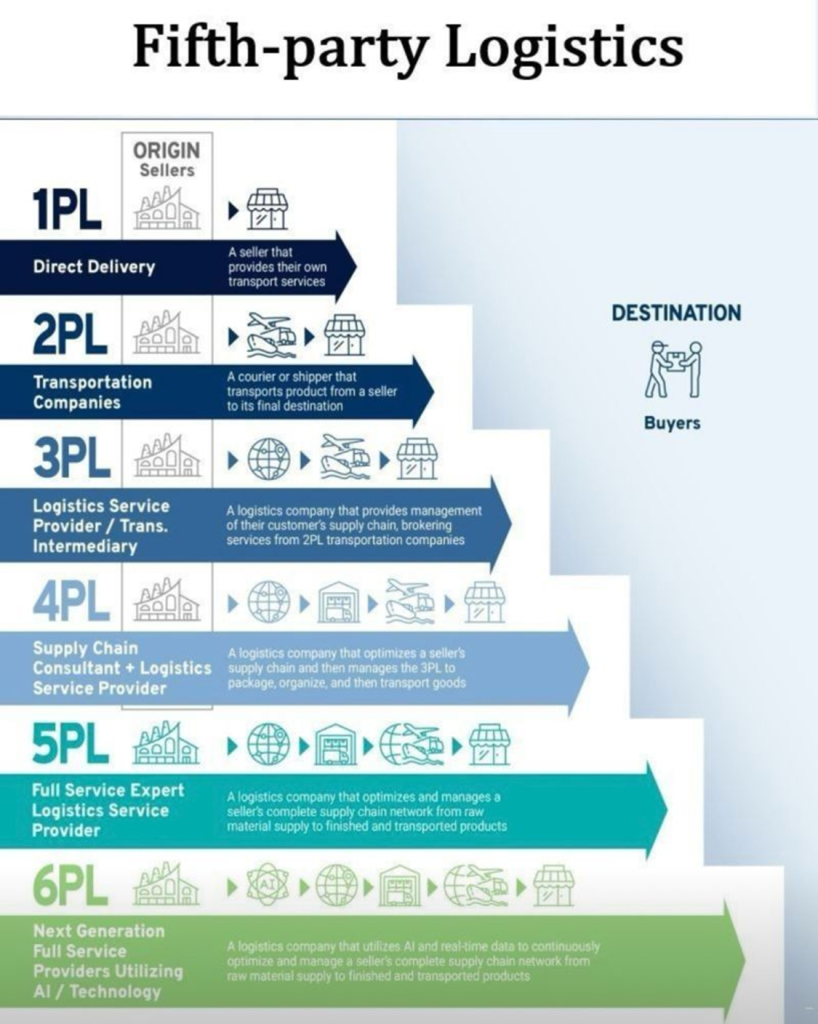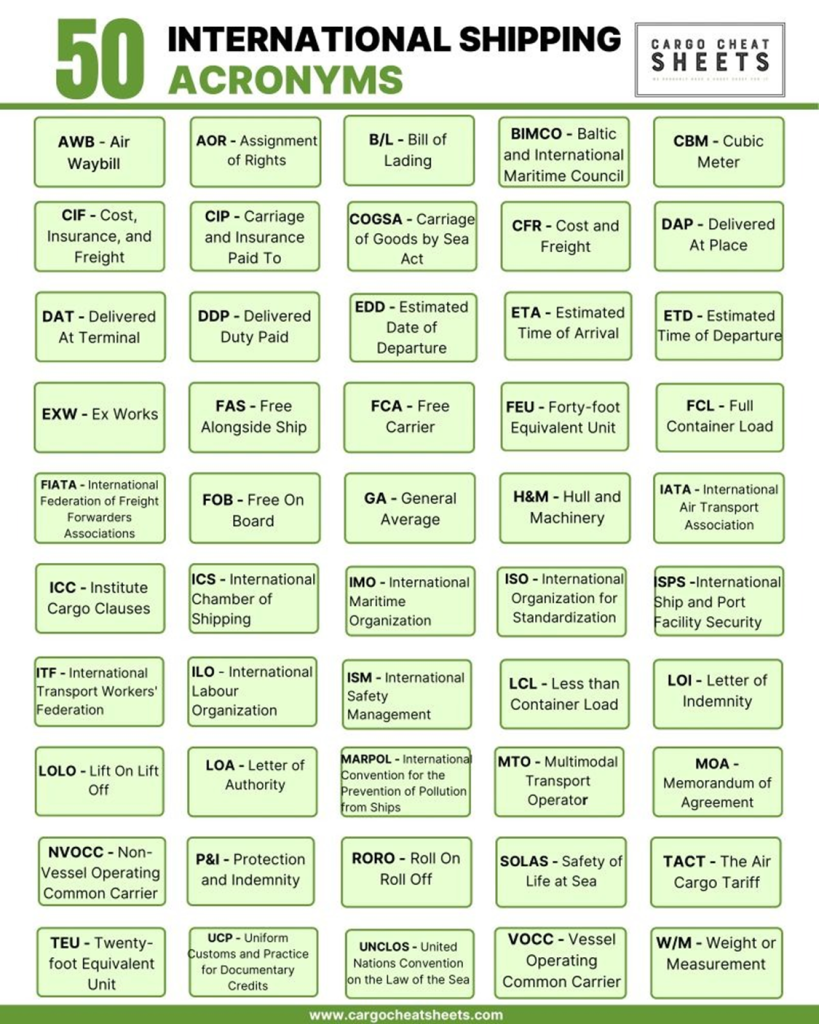Understanding INCOTERMS in Logistics in Simple Terms.
INCOTERMS.(International Commercial Terms) are international rules that define who is responsible for shipping, insurance, and risks when buying and selling goods across borders. They help buyers and sellers clearly understand their duties, making global trade smoother and avoiding confusion about who handles what during the delivery process.
Key Incoterms used in Logistics
1.EXW (Ex Works)
Seller: Provides goods at their location.
Buyer: Handles all transport, duties, and risks from the seller’s premises.
2.FCA (Free Carrier)
Seller: Delivers goods to a carrier chosen by the buyer.
Buyer: Takes responsibility after the goods are handed to the carrier.
3.FAS (Free Alongside Ship)
Seller: Gets the goods to the dock, next to the ship.
Buyer: Takes care of everything from loading onto the ship to final delivery.
4.FOB (Free on Board)
Seller: Responsible until goods are loaded onto the ship.
Buyer: Takes over once the goods are on board, covering risks and costs.
5.CFR (Cost and Freight)
Seller: Pays freight to the destination port but not insurance.
Buyer: Takes responsibility once goods are on the ship.
6.CIF (Cost, Insurance, and Freight)
Seller: Pays for goods, freight, and insurance to the destination port.
Buyer: Handles duties and transport after the goods arrive.
7.CPT (Carriage Paid To)
Seller: Covers transportation to a specified location.
Buyer: Takes responsibility after goods are handed to the carrier.
8.CIP (Carriage and Insurance Paid To)
Seller: Pays for transport and insurance.
Buyer: Responsible once the goods are with the carrier, handling further duties and costs.
9.DPU (Delivered at Place Unloaded)
Seller: Delivers and unloads the goods at the agreed location.
Buyer: Takes over after the goods are unloaded and handles any customs and local transport.
10.DAP (Delivered at Place)
Seller: Delivers goods to the buyer’s location, excluding unloading.
Buyer: Takes care of import duties and taxes
11.DDP (Delivered Duty Paid)
Seller: Responsible for everything, including import duties, until goods reach the buyer.
Buyer: Just receives the goods.

1PL – First-Party Logistics
A First-Party Logistic Provider is made up of two parties, the supplier and the retailer/customer. A 1PL logistics provider transports items from stock to shelves. In this type of relationship, the supplier manages their own inventory, storage, and delivery.
2PL – Second-Party Logistics
Second-Party Logistics Providers focus solely on the transportation sector of business. Examples of 2PLs include airlines, shipping lines, and hauling companies that operate the vehicles. 2PLs transport inventory between one or more legs of the fulfillment journey.
3PL – Third-Party Logistics
Third-Party Logistics is an industry term most are familiar with. For companies looking to outsource their entire logistics process, 3PLs are the answer. They are able to handle the management of receiving, inventory warehousing, packaging, and shipping services, letting e-commerce businesses focus on other important areas of their company. Some 3PL businesses offer additional logistics services known as value-added services. These include inventory management, kitting and assembly, and more.
4PL – Fourth-Party Logistics
Fourth-Party Logistic Providers act as consultants. While their services are similar to a 3PL, they lack the physical means to move inventory through the supply chain themselves. Instead, a 4PL will contact and negotiate services between the necessary companies on your behalf.
5PL – Fifth-Party Logistics
A Fifth-Party Logistics Provider, or 5PL, is a consultant that operates at a level above a 4PL. Essentially, 5PLs serve as aggregators for 3PLs by bundling the needs of multiple 3PL businesses to secure better rates on services. When working with a 5PL, you can expect a fully integrated logistics solution that encompasses the entire supply chain from beginning to end. This is achieved through the coordination of multiple outsourced logistics providers, ensuring a seamless and efficient process.

The bill of lading is probably the first document you learn about when you start out in the cargo industry.
But what you may not know, there isn’t just one. There are many. And each one has a specific purpose.
I thought the bill of lading was simple.
Then I came across a
Straight Bill, a Bearer Bill, and an Order Bill
—and realised I had to learn fast.
Here are a few you should know:
1️⃣ Straight Bill of Lading
* Non-negotiable.
* Goods are delivered to a specific consignee.
2️⃣ Order Bill of Lading
* Can be bought, sold, or traded while goods are in transit.
* Seller retains control until payment.
3️⃣ Bearer Bill of Lading
* Highly negotiable and transferable.
* Risky because it doesn’t specify a consignee.
4️⃣ Seaway Bill of Lading
* No need to present it for cargo release.
* Used when there’s trust between shipper and consignee.
5️⃣ Through Bill of Lading
* Covers shipments across multiple transport modes.
* One document for the entire journey.
Why is this important?
Because using the wrong bill can lead to delays, extra costs, or even lost shipments. And no one wants that.
It’s easy to get overwhelmed, especially when you’re managing so many details at once.

Special Thanks to Mr. Ramzan Ali (Raju)
